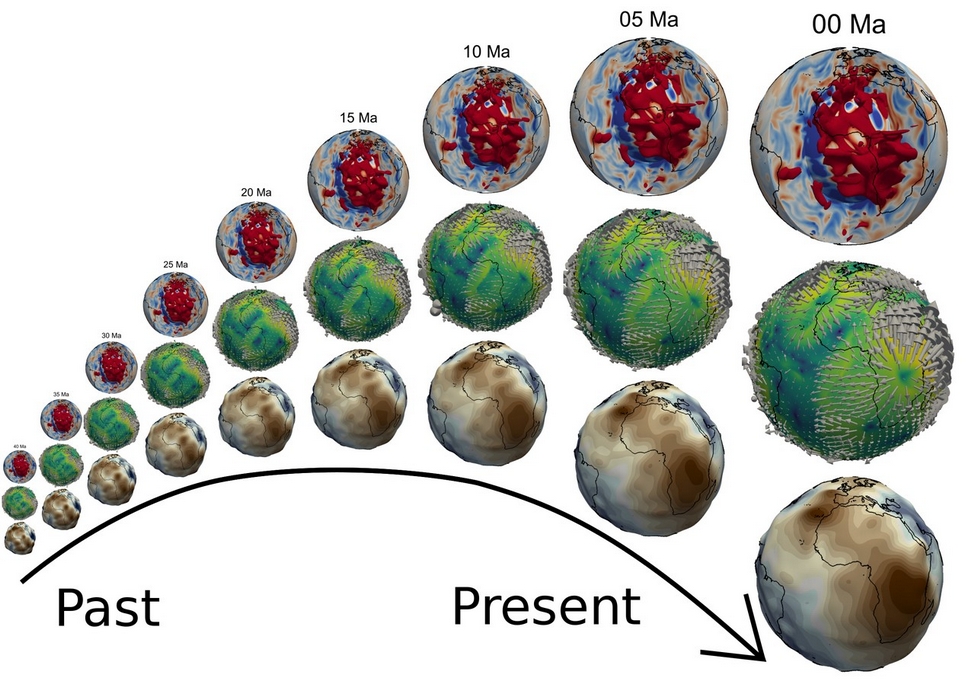Theoretical Geodynamics
Flow in the Earth’s mantle is a phenomenon that is not intuitively graspable, because time and length scales are beyond the human everyday experience. Further difficulties arise because there is a lack of information from direct measurements. Computational advances in Geodynamics research make it possible to approach these difficulties on a new technical level. Numerical models can nowadays be run at very high resolution to capture the nature of convection in Earth’s mantle. However, in order to improve these models we need to make predictions about the past evolution. This is necessary because we have no relevant observations of future states of the mantle, which evolves over millions of years. Simulating mantle convection from the present day to the future thus cannot inform us about the parameter choices that would lead to a better Earth model. Also, many observational constraints available to us (like seismic tomography, the Earth's geoid, geochemical measurements and plate motions) are by their very nature tied to an initial condition in the past. This initial condition is necessarily unknown.
Reconstructing Mantle Evolution Back in Time
Going back in time allows us to take these problems into account by performing so-called geodynamic inversions. Such inversions determine the "optimal" initial condition that evolves into the known (best-estimate) present-day state of the mantle. Another term for this type of modelling is data assimilation (originally developed for weather forecasting in meteorology). It makes it possible to formally link the physics of the mantle flow system with the available observational data. Most important, this allows for explicit predictions of the past history of mantle flow. These predictions can then be tested against independent observations gleaned from the geologic record.

Adjoint Geodynamics
In that regard, an important research area in our group involves the development of the theory for reconstructing mantle flow through this novel data-driven geodynamic modelling approach. A powerful technique that we concentrate on in the Munich Geodynamics group is the geodynamic adjoint method. Our group has derived so-called adjoint equations of mantle flow restoration for incompressible (Bunge et al. 2003; Horbach et al. 2014), compressible (Ghelichkhan & Bunge 2016) and thermochemical mantle flow (Ghelichkhan & Bunge 2018). These studies demonstrate that the evolution of the mantle can successfully be predicted from a past flow state in a dynamic model. Such "mantle flow retrodictions" thus provide natural links between many different fields in the geosciences.

Technical questions that are addressed in our research revolve around the different aspects of the geodynamic inverse problem. The explicit linkage of models and observations poses a number of practical questions: from the physical description in terms of equations, to compiling suitable data sets and the propagation of errors in geodynamic models. Our goal is the development of next-generation Earth models that are readily usable for quantitative interpretations in different geoscientific disciplines.
